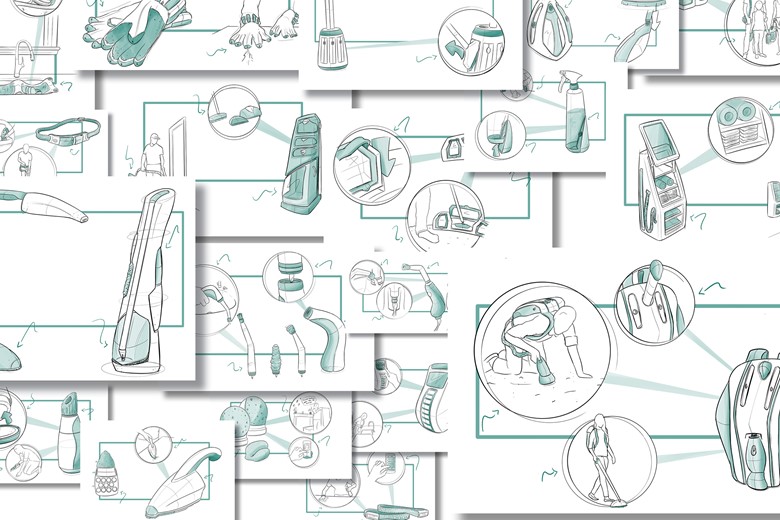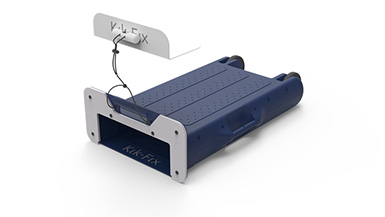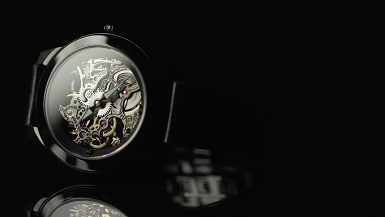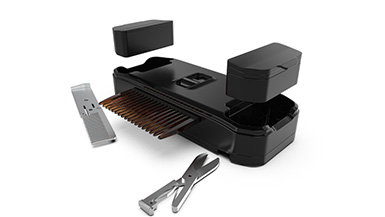Women in Design: Featuring Our Industrial Designer Sophie Fornaro
Once we got confirmation that we could now work from the comfort of our own homes, I did what every sane person would do. Open up 50 tabs on my browser to discover the perfect chair for my home office. And find the perfect chair I did. Premium, but not too pricy; comfortable, but stylish.
To quote Goldilocks, the Herman Miller Sayl was just right. Along with the Sayl, one of the most iconic pieces in their catalog is the Eames Lounge Chair. A beautiful design from wife-and-husband duo Ray and Charles Eames. Or was it? “They’re a team, and yet Ray was overlooked in every publication, often referred to in passing as Charles’ “wife and assistant‘,” says Sophie, our Industrial Designer Specialist in Miami.
While I knew the industrial design industry was heavily populated by males – an old boys club with enduringly held beliefs counterintuitive to the evolution of our field of design – I didn’t know the extent of it. Not until I read Ti Chang’s article on Core77 earlier this year.
Ingrained in our industry are beliefs – sexist beliefs rooted in outdated gender norms that can derail a woman’s career in or passion for design. It’s these beliefs that tell a woman that she is not good enough to be a part of this industry. Or that she must choose between starting a family or her career.
I wanted to hear firsthand about the challenges of working in such a constraining environment. So I reached out to Sophie at our Miami office to learn why, as Ti mentions in her article, design is still a man’s world.

Industrial Designer Specialist in Miami Sophie Fornaro
Designed by Men, for Men
The unfortunate truth is that many experience this from the moment they step into the classroom. “When I was in design school,” our industrial design specialist in Miami recalls, “Half of us in our class were girls; yet, there was still such a masculine energy in the room.” Indeed, the ‘old boys club’ isn’t confined behind the walls of faceless studios. It’s a culture that tends to give an edge to the men in all facets of our industry.
“Intentional or not, women are taught to design for men,” Sophie shared. In Ti’s article, she uses a product as ubiquitous as the seatbelt as a critical example. What’s wrong with the seatbelt? It was only designed with men’s bodies in mind. Although it might come as a revelation to some, it’s examples like these that highlight how the necessities in our daily lives are designed for men first.
So yes, it’s a pretty even split of male and female students in the classrooms. Yet the highest positions, even at school, are held by men. “I was only ever taught by women when it came to a design-adjacent capacity. Women taught marketing for design or design history, as opposed to actual design principles,” shares Sophie. It’s the men who teach how to design. They’re the ones critiquing the work. And intentional or not, the men in these teaching roles often bring that all too familiar old boys culture with them.
Taught By Men, Critiqued by Men
If and when that masculine culture seeps into the classroom, it creates this bizarre air of quasi-competitiveness – but exclusive for the women.“When our work gets critiqued, we expect our work to be compared to other brands or styles,” Sophie explains. And, of course, the men in her classes got this expected treatment.
“The women, on the other hand, often had their designs exclusively compared to one another,” Sophie recalls. “In a way, this made us feel like our work wasn’t even good enough to be critiqued and compared to the industry trends.” This exclusionary practice is most likely unintentional. Yet, it’s this exact type of behaviour that exacerbates the pervasive notion that not all women have a place in the design industry.
Scroll through almost any major hardware product or industrial design website. You’ll quickly realize the designs often have distinctly masculine properties. Why is our market saturated by such a homogeneous mix of products? Products that are sharp, sleek, and only come in white, black, or some iteration of space grey.
The reason is as simple. Men tend to like sharp and sleek products that come in white, black, or some iteration of space grey. If we’re talking about functionality with respect to design, ergonomics are often based on male body proportions as well.

Concept designs by Sophie.
Think Like Men, To Join Men
But rather than conform to expectations, Sophie took her designs in the complete opposite direction of the current meta. “I chose to take my design in a really feminine direction, with softer features.” While Sophie is able to carve out her own way of doing things, others are not quite so lucky. Especially for young, aspiring designers trying to get their foot in the door to work for larger, globally recognized design studios.
When we talked about her time right after graduation, Sophie brought up her feelings about landing her first job outside of school. “As a young designer, it felt as if adjusting my design to reflect the masculine norm for industrial design was the only way to land a job with a design consulting giant.” She’s definitely not alone in that.
Sophie shares some of the conversations to add some insight into why that is. “Thankfully, this hasn’t happened to me yet, but I’ve had friends and classmates who had their ideas constantly ignored or second-guessed at work,” Sophie begins. “It’s not until a male coworker steps in and repeats exactly what they said or backs them up for support.” Isn’t that ridiculous?
What Can Aspiring Inventors Do to Help?
Luckily, there’s some cause for optimism. “There’s a huge culture around women in design now. The IDSA has done a lot of work to push that forward,” says Sophie, the industrial design specialist in Miami. The IDSA (Industrial Design Society of America) annually hosts this amazing event – The Women in Design Deep Dive. It’s an inclusive platform for designers to talk about the challenges, accomplishments, and initiatives of women in our industry.
Aspiring inventors might be reading this wondering what they can do to help. Especially for those not directly part of the industrial design industry. It really just starts with your design. As you’ve read above, designs are male-dominated – that’s it’s made by men for men.
When you’re coming up with your idea, carefully consider your target audience. If it’s a unisex product, think of the seatbelt example above. All it takes is a simple question. Just ask yourself, is my product really designed for both women and men?
Have a Product Idea?
Discover our product development services tailored to startups, small manufacturers, and inventors.
Design Newsletter
Get the latest news curated for designers, makers and inventors.
More from our Blog
TriMech Client Kik-Fix Goes Viral Earning Over 18 Million Views on TikTok
TriMech client Kik-Fix just went viral earning over 18 MILLION VIEWS for their laundry hamper invention design on TikTok!
MAKO Client Spotlight: Bennetti Watch
Why does one adorn a luxury timepiece? Perhaps to be taken seriously or stand out amongst peers. Or maybe they simply wear it to complement…
Our Client Launches New Website to Showcase The Blazing Beard Tool
Our client, Blazing Beard Products, just launched their brand new website! They created the Blazing Beard Tool, a seven-in-one beard grooming invention design! It has…
Need help with your Product Idea?
Tell us about your invention or product design idea and get the help you need design, build and bring it to market
















